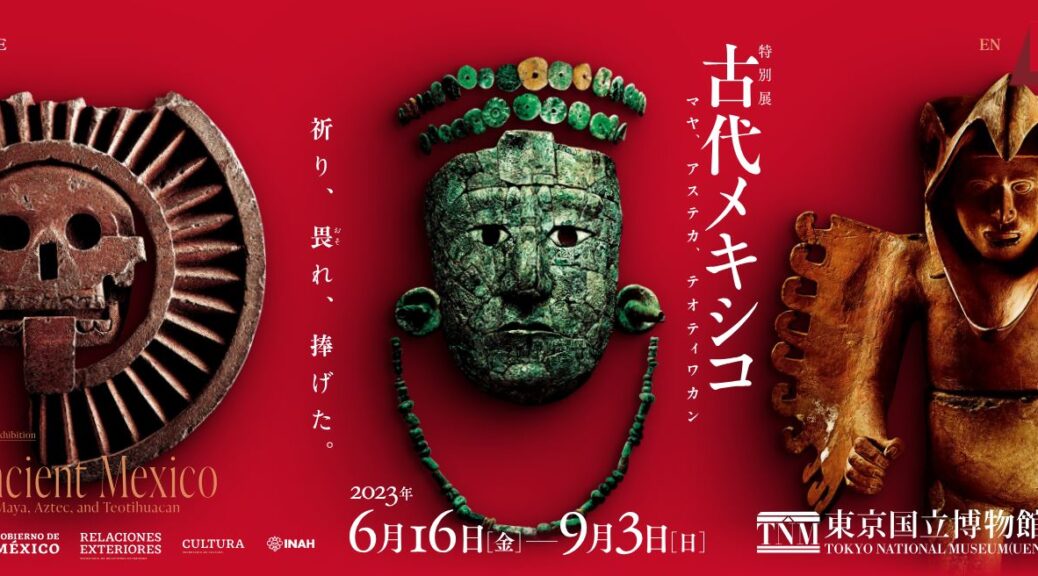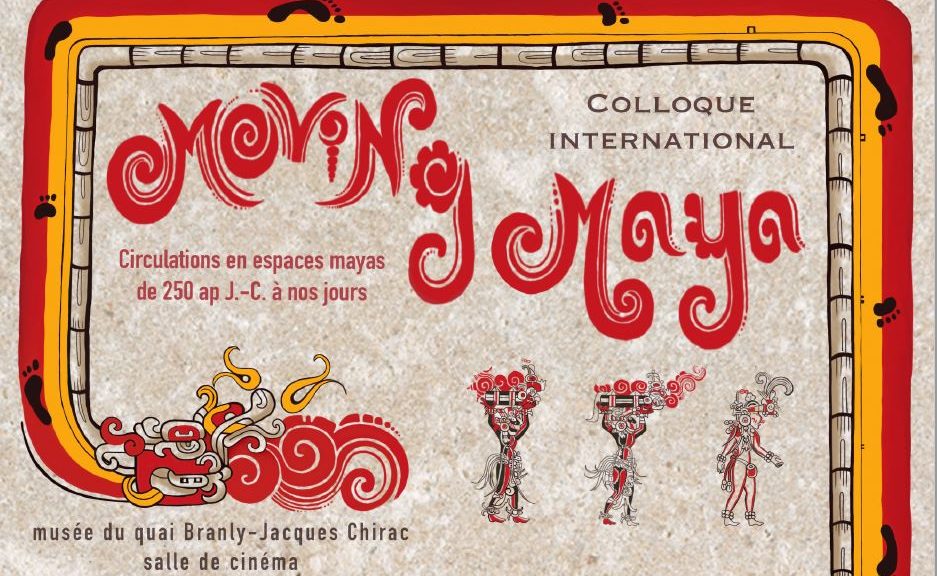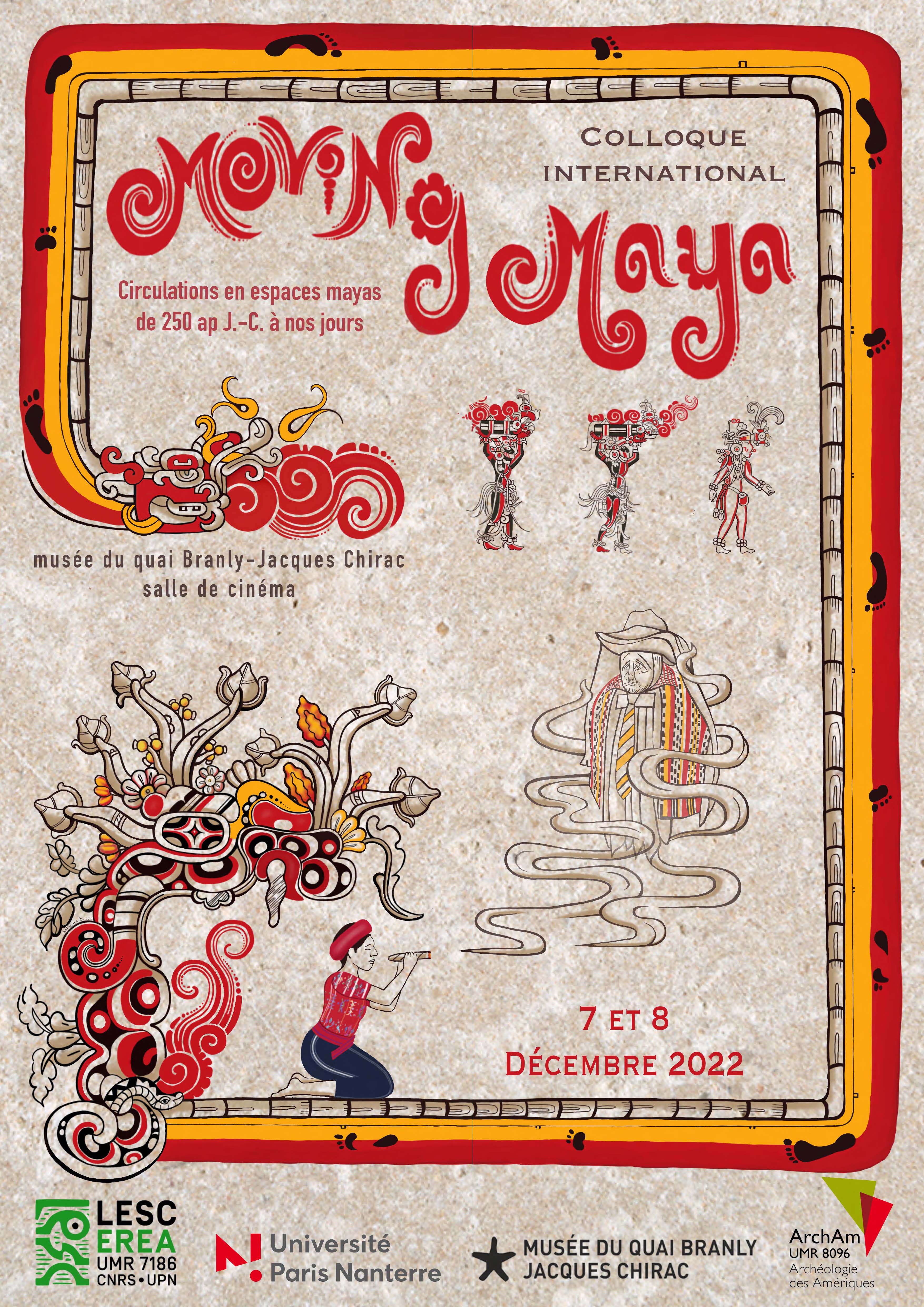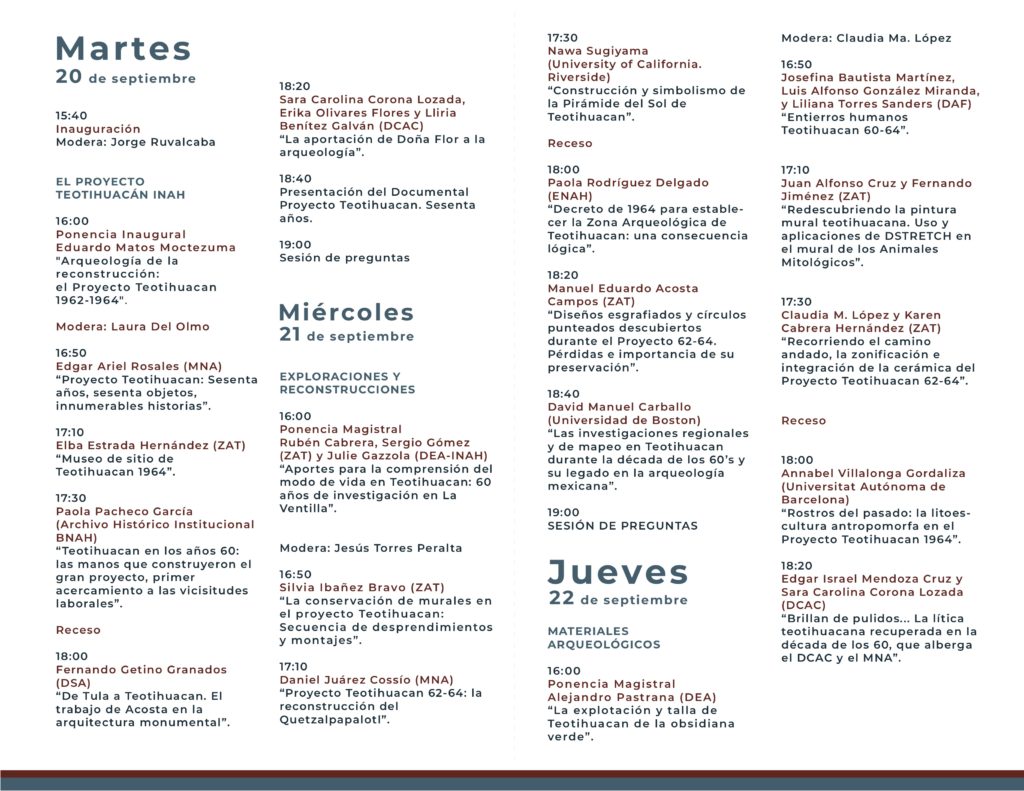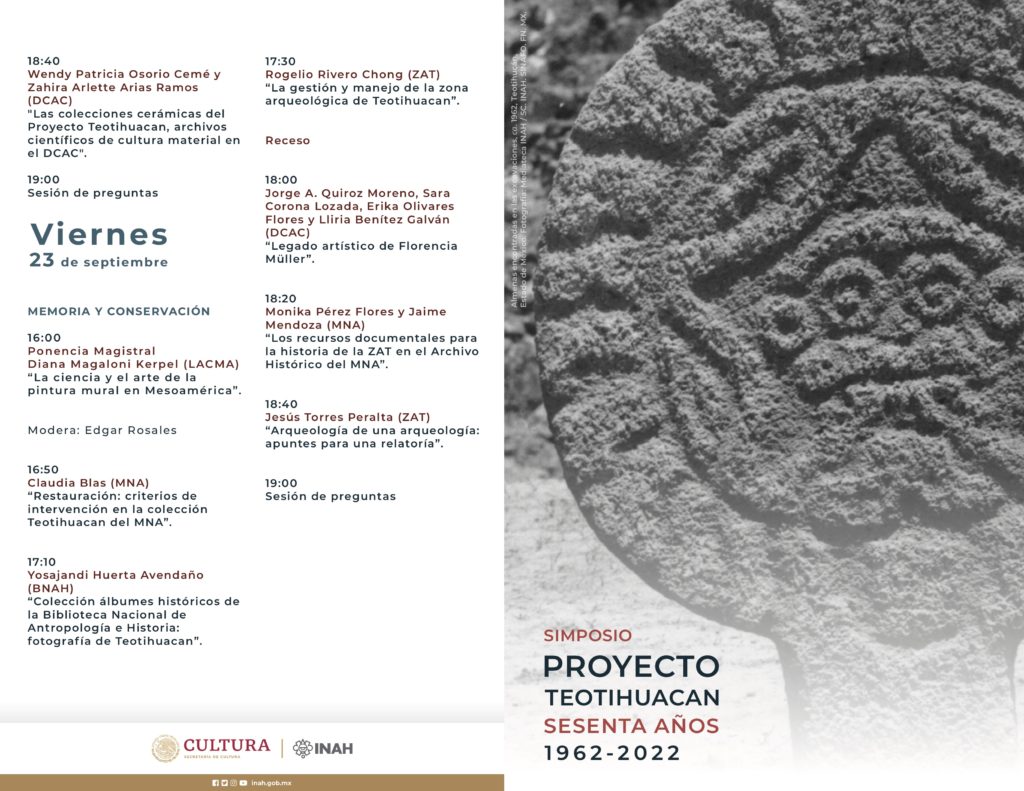Come join us at the Society for American Archaeology’s 2022 conference in Chicago, Illinois. Our team members have prepared the following presentations this year:
SATURDAY, APRIL 2
SYMPOSIUM INTERDISCIPLINARY EXPLORATIONS OF URBANISM ,
POLITY , AND DAILY L IFE IN TEOTIHUACAN AND BEYOND :
S YMPOSIUM IN MEMORY OF GEORGE COWGILL
Room: Lake Huron
Time: 9:00 a.m.–12:00 p.m.
Chairs: Nawa Sugiyama, Sarah Clayton and Saburo Sugiyama
Participants:
9:00 Saburo Sugiyama, Nawa Sugiyama, Kazuhiro Sekiguchi and Kuninori
Iwashiro—A New Approach for the Cognition of Time, Space, and
Rulership in the Cosmic City of Teotihuacan
9:15 Verónica Ortega Cabrera—Las ofrendas de la Plaza de la Luna
Teotihuacán, evidencias del complejo ritual
9:30 Emily McClung de Tapia and Laura Beramendi-Orosco—Landscape
Formation/Transformation in the Prehispanic and Colonial Teotihuacan
Valley
9:45 Nawa Sugiyama, Karl Taube, Saburo Sugiyama and Ariel Texis—
Pilgrimage from Center to Periphery: Petrographic Data from Cerro
Patlachique
10:00 Sarah Clayton, Nawa Sugiyama and Karl Taube—Inscribing Clay and
Stone: A Multimedia Study of Writing and Literacy at Teotihuacan
10:15 Jennifer Carballo and David Carballo—A Deep History of Central
Mexican Pottery: Daily Life and Diachronic Patterns
10:30 Destiny Crider—Listening to What the Sherds Tell Us: The Legacy of
George Cowgill on Epiclassic Ceramic Studies
10:45 Michael Smith—George Cowgill’s Approach to Comparative Urbanism
11:00 Alanna Ossa—Gulf Urbanism and the Ballcourt
11:15 Deborah Nichols—Discussant
11:30 Norman Yoffee—Discussant
11:45 Questions and Answers
SYMPOSIUM IN MEMORY OF WENDY ASHMORE: LANDSCAPES OF
MEANING, BIOGRAPHIES OF PLACE, AND ARCHAEOLOGIES OF
COMPASSION, PART 1
Room: Lake Michigan
11:30 Karl Taube, Travis Stanton and Yun Ge—Living Mountains: Cosmology,
World Directions, Centering, and Community in Ancient Mesoamerica
and East Asia
SYMPOSIUM RECENT RESEARCH IN MESOAMERICA
Room: Continental B
3:45 Esther Aguayo, Nawa Sugiyama, Yen-Shin Hsu and Christine France—Teotihuacan and the Missing Staple: An Analysis of Deer Use at Plaza ofthe Columns Complex
See you all there!
